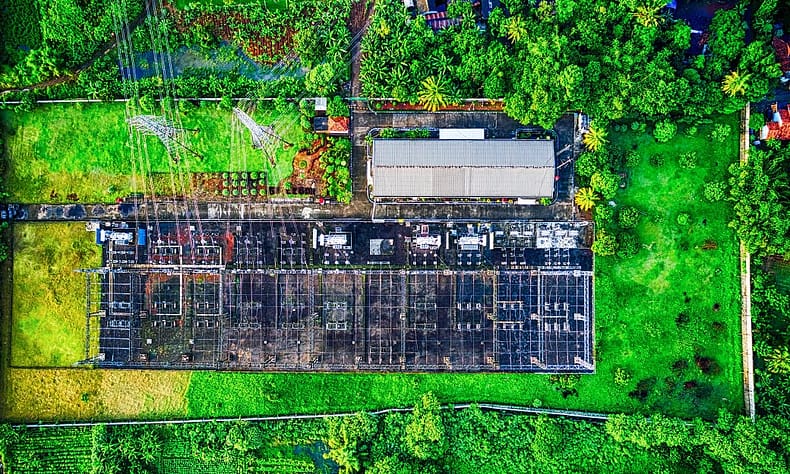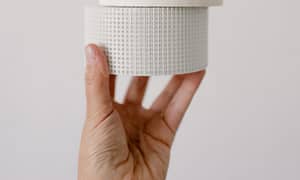
Metal roofs have proved to be a long-lasting roofing solution for homes and commercial buildings.
Generally, metal roofing is expected to last between 40-70 years, depending on the metal type. Read on for more insights on the lifespans of different metal roofs.
Advantages of Metal Roofs
Why should you consider installing a metal roof?
Metal roofs are sturdy and durable, which allows them to last longer than traditional roofing materials. They are designed to resist harsh conditions, such as heavy snowfall, wind gusts, and heavy rainfall.
Below are even more reasons to install this special kind of roofing in your home or commercial property.
Safety
If installed correctly, metal roofs will protect you from the wildest weather conditions, such as torrential rainfall, lightning, thunderstorms, and wildfires. They are also sturdy enough to keep your home safe from burglars, insects, and even wild animals.
Malleability
We all want roofing materials that complement the external appearances of our homes. With metal roofs, you can find different shapes and designs that give your house an aesthetic appeal.
You can find metals that imitate the profile of other roofing materials, such as shingles, clay, tiles, seam, and slate. Metal roofs are flexible and can be molded to take various shapes and designs.
Energy efficiency
If you live in an area that sometimes just feels too darn hot, metal roofing will help lower the temperature within your house. Unlike other materials that may absorb heat, metal roofs reflect heat from the sun and thus reduce the base temperature of your house. These roofs help reduce energy consumption and cooling costs.
Environmental Friendliness
Most metal roof materials are made from recycled materials. After their lifespan ends, these roofs are 100% recyclable. Choosing metal roofs can play a significant role in reducing waste materials released into the environment going into the future.
Types of Metal Roofs and Their Longevity
Different roofing materials have different lifespans. This difference in longevity exists because metals react to the elements uniquely.
Copper Roofing
Copper is the most long-lasting roofing material you can find on the market today.
On average, copper roofing can last over 200 years if installed correctly. As a result, you’ll likely find copper roofs on government buildings, schools, churches, and historic residences that were originally installed in the 19th century.
While all roofing will eventually wear out, copper roofs will stand the test of time compared to other roofing materials.
To ensure your copper roof lasts longer, make sure it is installed correctly and address any minor damage. Luckily, copper roofing doesn’t require consistent maintenance.
When installed, copper forms a thin coating called patina. The coating results from oxidation. Unlike corrosions on other metal materials, patina does not damage the copper. Instead, the thin layer protects the copper roofing from further deterioration. With patina, you don’t have to keep repainting your copper roof.
However, copper will rust if exposed to:
- Acid rain
- Ammonia
- Bacteria
- Masonry cleaners
- Potassium hydroxide
- Sodium hydroxide
The best way to reduce corrosion is to clean your copper roof regularly with clean water. Be sure to remove grime, dust, and bird droppings that might accelerate deterioration due to their acidity.
Steel Roofing
Steel roofing has a standard lifespan of 40 years. It can last even longer if appropriately installed and maintenance is performed periodically.
Some manufacturers coat steel roofs with zinc to make them corrosion-resistant and durable. How long your steel roofing lasts will depend on the thickness of the zinc layer and the environment.
When looking for metal roofing that adds beauty to your home, a steel roof has got you covered. With a steel roof, you can rest assured of using a more versatile roofing material that imitates other roof types such as shingle, slate, and clay.
To increase the longevity of your steel roof, inspect it regularly to remove debris, branches, moss, and stains. In the case of heavy snowfall, clear the snow regularly to reduce stress on your metal roof. Then rinse the roof with clean water to eliminate any acid accumulation.
You can also paint your steel roof to add protection to the base material.
Aluminum Roofing
Aluminum is lightweight and is used for a wide range of purposes compared to most other metals. When used as a roofing material, aluminum has an average lifespan of 50 years. Unlike steel, aluminum is highly resistant to corrosion and makes for ideal roofing in coastal regions.
During warmer months, aluminum can help keep your house cool and help lower your electricity bills. The material itself is lightweight, and stores little heat as a result. Additionally, aluminum roofing reflects light and solar heat, allowing it to shed heat quickly.
Most homeowners wonder whether aluminum is ideal for roofing in adverse environments, due to its light weight. An aluminum roof is actually sturdy and can withstand harsh conditions such as torrential rainfall, heavy snowfall, and wind.
However, it’s important to conduct regular maintenance to your aluminum roof to lengthen its lifespan. You can paint, remove debris, snow, and leaves, and cut branches that scratch your roofing during these regular checks. Elastomeric coatings come in handy for waterproofing your aluminum roof and make it look beautiful.
Zinc Roofing
Zinc, like copper, is highly durable. It can be expensive, but zinc roofing can last for 60-100 years (or more!) if installed correctly.
Zinc is a sustainable metal that is 90-95% recyclable. It also requires less heat than other metals during processing and manufacturing, making it an eco-friendly metal.
You don’t have to maintain zinc roofing as regularly as other materials, since it is corrosion-resistant. If your zinc roof sustains a scratch, it heals itself with time. Zinc is used in coating galvanized steel roofs to make them more durable. However, zinc will rust over time if exposed to acid rain and ammonia.
Looking to use zinc roofing but worry about visual appeal? Zinc can conform to various shapes and designs, offering a wide range of choices. Whether you wish to use zinc roofing that imitates the shape of tiles, clay, shingle, or slate roofing material, you will find multiple aesthetic profiles.
Factors Affecting the Lifespan of Metal Roofing
Due to various factors, metal roofs can last for much shorter or longer than the average lifespan.
Maintenance
Metal roofs typically require less maintenance than traditional roofing materials. If installed correctly, you don’t have to keep inspecting them regularly because they are created to be durable.
Less maintenance doesn’t mean you should neglect your metal roof for years without care. Exposure to acid rain, ammonia, debris, heavy snowfall, and branches can damage your metal roof.
To extend your roof’s lifespan, inspect it periodically to ensure no branches, moss, or debris rest have built up. Rinse your metal roof with clean water to remove any acid that might corrode it. If there’s a need for repair, call a licensed roofing contractor to repair your roof before the problem gets bigger.
Weather
The longevity of a metal roof will significantly be affected by the weather. Metal roofs can withstand adverse weather conditions for a long time compared to traditional roofs.
However, weather conditions will determine how long or short your metal roof will last overall. If you live in an area prone to blazing sun, high-speed winds, or heavy snowfall, your metal roof’s lifespan might decrease.
While metal roofs are designed to withstand such extreme conditions, they will rust and wear/tear more quickly than those installed in relatively mild climates.
Choose a steady roofing material that will last when exposed to your area’s specific weather conditions.
Installation
Despite being more durable than traditional roofing materials, a poorly-installed metal roof won’t last long. High-speed winds, heavy rainfall, and heavy snowfall will easily damage a metal roof if it is installed poorly.
The most effective way to lengthen the lifespan of your metal roof is to install it properly in the first place. Before installation, look for a licensed roofing contractor to install your roof based on the manufacturer’s specifications.
For example, a professional roofer will avoid scratching the paint on your metal roof when installing. Scratching the coating can expose the base layer to moisture, causing rusting of your metal roof. When well installed, your roof should be free from leaks, cracks, and rust -all of which might shorten its lifespan.
Roof Color
Material color can directly affect how long your metal roof will last.
If you’re installing a metal roof in an area with high temperatures throughout the year, avoid using darker metal. Dark roofing materials absorb more heat and might cause rusting if exposed for too long. Instead, install a lighter colored metal roof since such a roof will reflect solar heat, minimize indoor temperature and reduce chances of rusting.
If you must use a dark metal roof, use acrylic elastomeric roof coatings. The coatings will reflect solar heat and reduce the indoor temperature.
Final Thoughts
Installing metal roofing on your house is a great way to extend your roof’s lifespan. Metal roofs are versatile, visually appealing, and can last between 40-70 years (or more).
An ideal way to ensure your metal roof lasts longer is to choose a metal material that withstands your area’s weather conditions. When installing, hire a licensed roofing contractor who will deliver an excellent job the first time – and keep out whatever Mother Nature decides to send your way.
Author Bio for Louis Hanley
Louis Hanley
Community Manager
Louis is a community manager for Baltic Roofing where they help the greater Chicago community with everything from high-quality roof replacements to skylight repairs. He is an expert on all things roofing and home improvement. Outside of work, he’s a huge Cubs fan and enjoys spending time with his dog, Roscoe.





